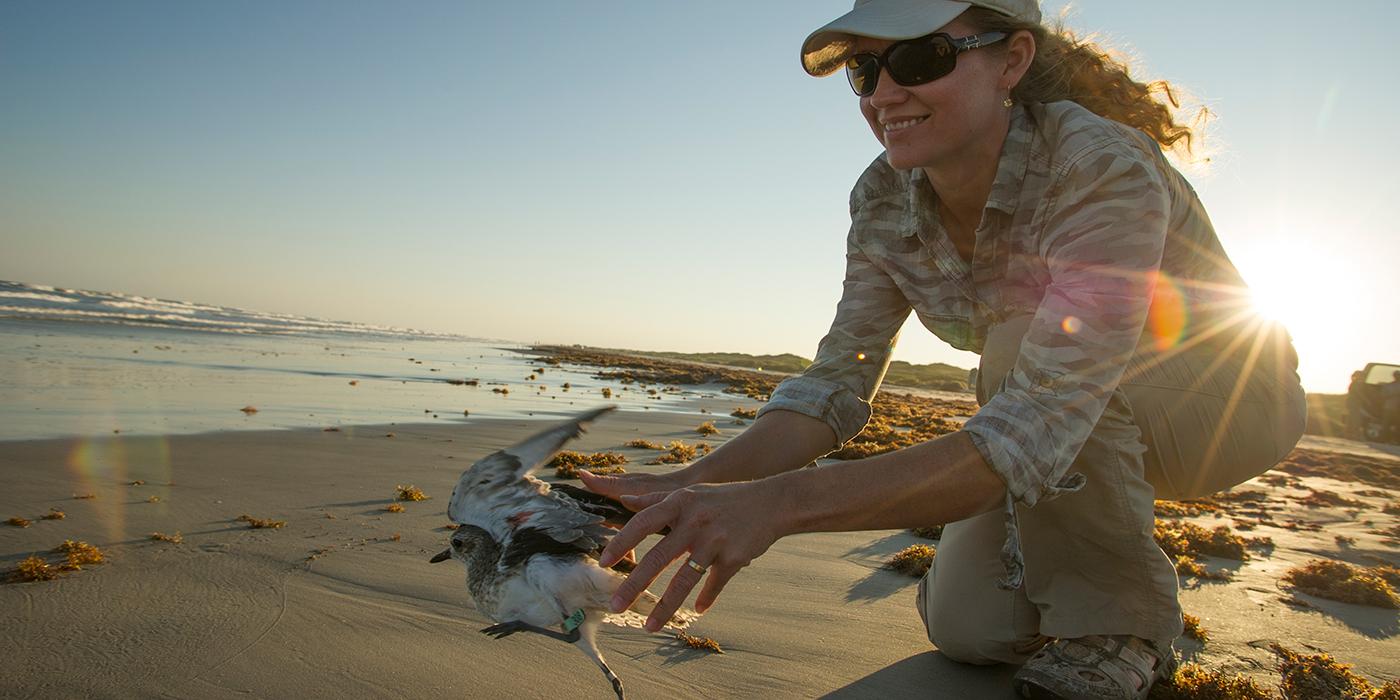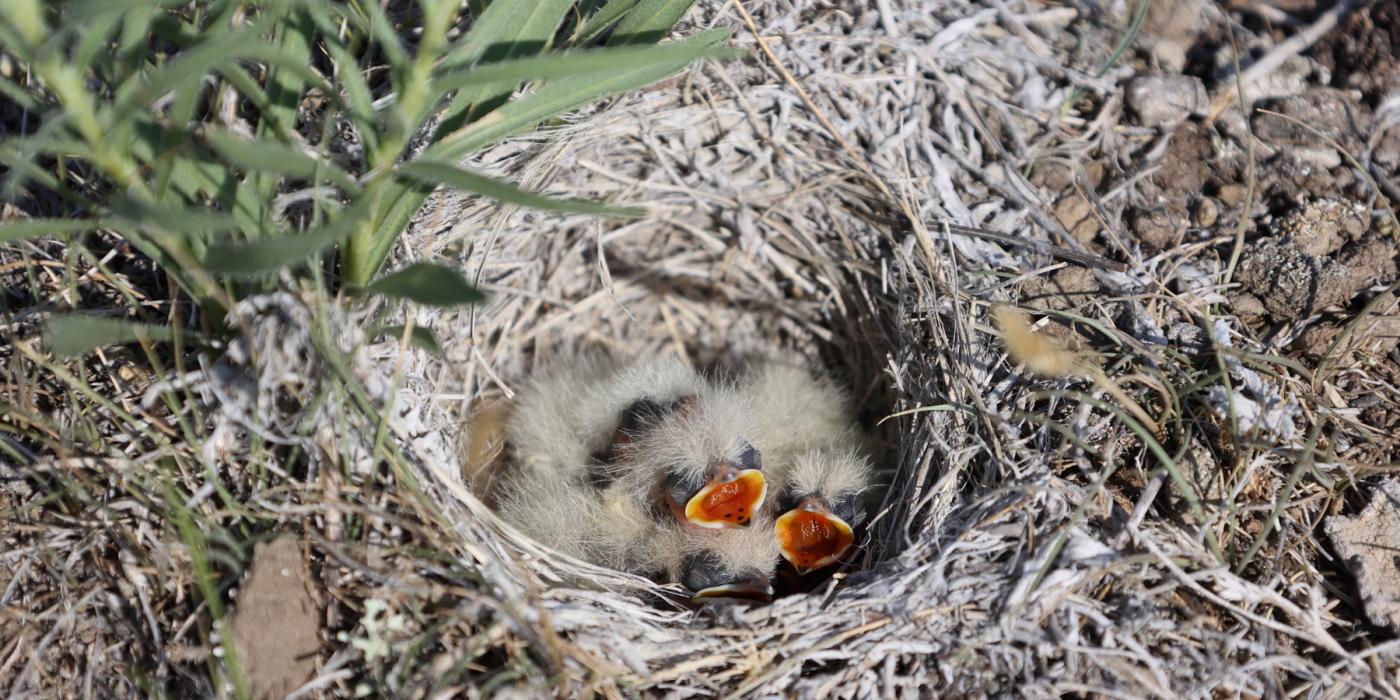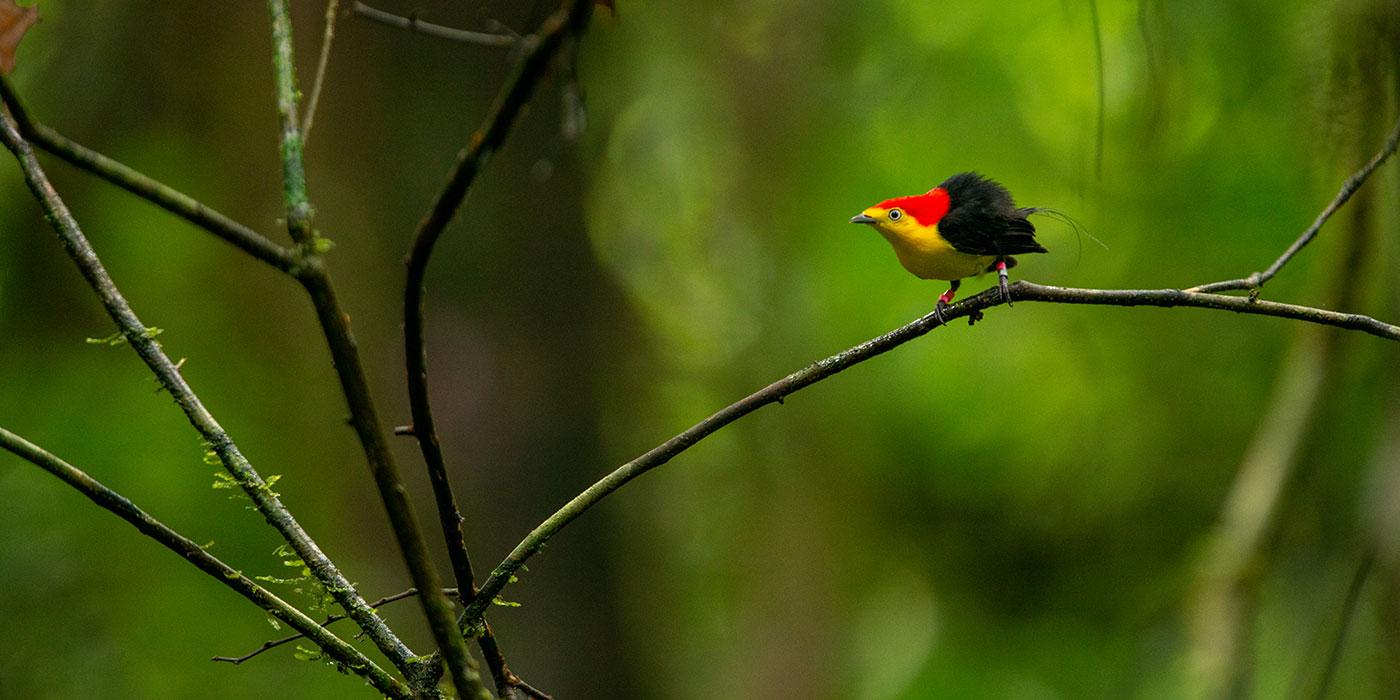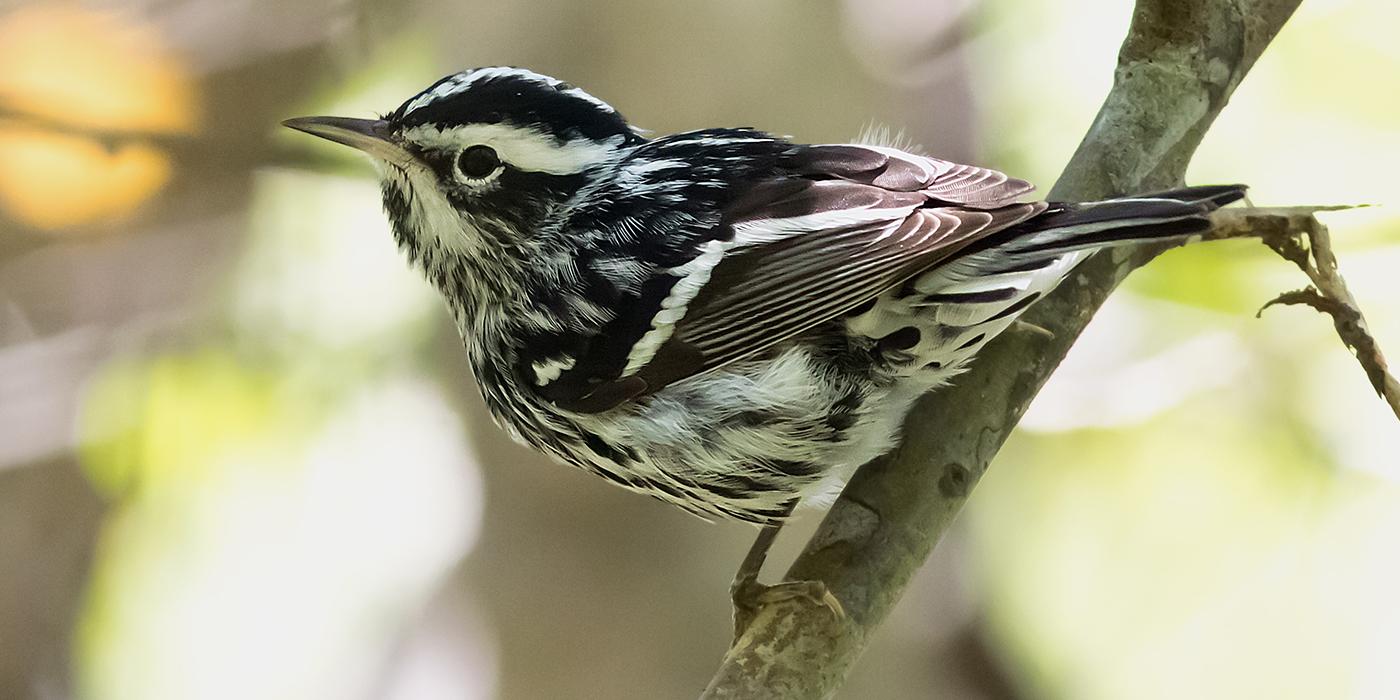When it Comes to Pesticides, Birds are Sitting Ducks

The word pesticide is a catch-all term for chemicals that kill or control anything that humans have deemed to be a pest. Such chemicals can be grouped according to the kind of organism targeted, such as insecticide (insect), herbicide (weed), fungicide (fungus), or rodenticide (rodent).
Most pesticide compounds in use today are synthetic; that is, they are man-made concoctions produced in a laboratory. A danger inherent to the use of synthetic poisons is that once the chemicals are released into the environment, they may harm unintended victims and have unanticipated effects.
On a global scale, over 5 billion pounds of conventional pesticides are used annually for agricultural purposes, forest and rangeland management, and disease control, as well as in homes, and on lawns, gardens, golf courses, and other private properties. Twenty percent of this total volume, or 1.2 billion pounds, is used in the United States alone. What does this massive chemical dousing of the earth mean for the health of the environment? Birds provide some of the answers.
Population declines and extensive mortality of birds strongly indicate that the health of the environment, and thus the health of organisms that depend on it, suffers due to the prevalence of pesticides. From songbird declines beginning in the 1940's, to population crashes of peregrine falcons, ospreys, and other predatory birds first detected in the 1960's, to the more recent deaths of over 5% of the world’s population of Swainson’s hawks during the winter of 1995, birds have been unwitting victims of pesticide contamination.
The Legacy of "Silent Spring"
In 1962, Rachel Carson’s eloquent and best-selling book, Silent Spring, drew international attention to the environmental contamination wrought by pesticides, particularly the insecticide DDT. Carson cited declines in the number of songbirds due to poisoning as a key piece of evidence.
Six years later came documentation of a more insidious effect of pesticide use. Accumulations of DDE, a compound produced when DDT degrades, were causing reproductive failure in several species of predatory birds, including Peregrine Falcons, Brown Pelicans, Osprey, and Bald Eagles. Not only was DDE toxic to developing embryos, it also caused eggs to be laid with abnormally thin shells. So fragile were the shells that the eggs would easily break under the weight of the adult bird during incubation.
DDT belongs to a class of insecticides known as organochlorines, which also includes dicofol, dieldrin, endrin, heptachlor, chlordane, lindane, and methoxychlor, among others. Some of these pesticide ingredients, such as dieldrin and heptachlor, are poisonous in very small amounts.
However, the most dangerous traits of the organochlorines are their persistence– that is, their tendency to remain chemically active for a long time—and their solubility in fat, which means they become stored in fatty tissues within organisms and can accumulate over time. Because of these two traits, contaminant levels become more concentrated with each step up in a food chain—a process known as biomagnification.
For example, when ospreys repeatedly feed on fish contaminated with DDT, increasing amounts of the pesticide are stored within their bodies. Biomagnification accounts for why predatory birds, being at the top of the food chain, are most severely affected by organochlorine pesticides.
Thanks partly to the fervor generated by Carson’s book and partly to a study done by the National Institutes of Health which found DDT or its by-products in 100% of the human tissues it examined, DDT and most other organochlorines were banned for use in the United States in the early 1970's.
Since the ban, numbers of the more severely affected bird species have slowly recovered. However, the fate of some populations of Peregrine Falcons remains uncertain because DDT, its breakdown products, and other organochlorines are still prevalent in the environment.
If DDT was banned in the United States in the early 1970's, why is there still a problem today? One reason is that the United States continues to export DDT, along with other pesticides known to be hazardous to the environment and to human health.
The countries of Latin America, the wintertime destination for many of the migratory birds that breed in the United States and Canada (including many Peregrine Falcons), are also the destination for many of these exported pesticides.
Over 5 billion pounds of pesticides are used annually. What does this mean for the health of our environment? Birds provide some of the answers.
New Pesticides, New Problems
Because of the ban on DDT and the tight restrictions placed on other organochlorines, a new arsenal of pesticides predominates today. Organophosphates and carbamates are now two of the most common classes of active ingredients found in pesticide products. Although organophosphate and carbamate compounds are not as persistent as the organochlorines, they are much more acutely toxic, which means that even very small amounts can cause severe poisoning.
It is estimated that of the roughly 672 million birds exposed annually to pesticides on U.S. agricultural lands, 10%– or 67 million– are killed. This staggering number is a conservative estimate that takes into account only birds that inhabit farmlands, and only birds killed outright by ingestion of pesticides. The full extent of bird fatalities due to pesticides is extremely difficult to determine because most deaths go undetected.
Nevertheless, sobering numbers of dead birds have been documented. For example, in 1995, the pesticide monocrotophos, sprayed to kill grasshoppers, was responsible for the deaths of at least 20,000 Swainson’s Hawks in Argentina. Thanks to the efforts of the American Bird Conservancy and other organizations, Novartis (formerly Ciba-Geigy), a major manufacturer of monocrotophos, has recently agreed to phase out the production and sale of this pesticide.
Over 150 bird "die-offs", involving as many as 700 birds in a single incident, have been attributed to diazinon, an organophosphate insecticide commonly used for lawn care.
In 1990, diazinon was classified as a restricted ingredient, and banned for use on golf courses and turf farms, marking the first time regulatory action has been taken specifically on behalf of birds.
However, in most states diazinon is still available over the counter for use on home lawns and parks. So despite the restricted-use status, as much as 10 million pounds of diazinon are still used yearly in the United States, primarily by home owners.
Continued reports of bird fatalities, and additional evidence concerning the extreme toxicity of diazinon and its metabolites to aquatic invertebrates and mammals have prompted the US Fish and Wildlife Service and a consortium of environmental organizations headed by the Rachel Carson Council to petition the Environmental Protection Agency to further restrict uses of diazinon.
In 1989, the Environmental Protection Agency reported that carbofuran was estimated to kill at least 1-2 million birds in the United States each year. This carbamate pesticide was introduced in the mid-1960's, but it wasn’t until 1994 that any regulations were imposed on the manufacturer, FMC Corporation. Granular forms are now banned for most uses because of widespread bird kills, although about 2 million pounds in liquid form are still used in the U.S. each year.
So far, about 40 active ingredients in pesticides have been found to be lethal to birds, even when used according to the instructions on the label. Only about a quarter of these ingredients have been banned in the United States, and most are still used elsewhere. The active ingredients that have proven to be deadliest to birds include diazinon, phorate, carbofuran, monocrotophos, isofenphos, chlorpyrifos, aldicarb, azinphos-methyl, and parathion.
Routes of Exposure and Direct Effects
Ingestion is probably the most common way that birds are exposed to pesticides. Birds can swallow the pesticide directly, such as when a bird mistakes a pesticide granule for a seed, or indirectly, by consuming contaminated prey. They may also ingest pesticide residues off feathers while preening, or they may drink or bathe in tainted water. Pesticides can also be absorbed through the skin, or inhaled when pesticides are applied aerially.
Whether or not a bird is harmed as a result of pesticide exposure depends on a number of factors, including the toxicity of the chemical(s), the magnitude and duration of exposure, and whether the exposure is recurrent. Potential harmful effects range from imminent death due to acute poisoning to a variety of so-called "sub-lethal" effects, including the following:
- eggshell thinning;
- deformed embryos;
- slower nestling growth rates;
- decreased parental attentiveness;
- reduced territorial defense;
- lack of appetite and weight loss;
- lethargic behavior (expressed in terms of less time spent foraging, flying, and singing);
- suppressed immune system response;
- greater vulnerability to predation;
- interference with body temperature regulation;
- disruption of normal hormonal functioning;
- and inability to orient in the proper direction for migration.
Each of these sub-lethal effects can ultimately reduce populations as effectively as immediate death, since they lower birds’ chances of surviving or reproducing successfully, or both.
Indirect Effects
Pesticides can also affect birds indirectly by either reducing the amount of available food or altering habitat. Birds that eat insects are literally at a loss when insecticides cause a drop in the number of insect prey available, especially when they have young to feed. The breeding season of many birds has evolved to coincide with peaks of insect abundance. Unfortunately for them, peaks in insect abundance also mean peaks in insecticide use.
Herbicides, too, can lead to decreases in insect availability by eliminating weeds on which insects live– a chain of events responsible for sharp declines of Gray Partridges in the United Kingdom. The food supply of birds that eat the seeds of weeds can also be reduced by herbicides. In Britain, Linnets, a type of seed-eating finch, have gone from being a rather common bird on agricultural lands to an extremely rare one due to this type of indirect herbicide effect.
Another way that herbicides can harm birds is by reducing the amount of plant cover available for predator avoidance and nest concealment. For example, erbicides have been used extensively in the western United States to convert sagebrush habitat into cattle pastures. This loss of sagebrush has caused declines in Brewer’s Sparrows, which require the cover provided by the plant for nesting.
Should we heed the warning signs provided by birds, or continue to pay the high environmental and social costs of rampant pesticide use?
Neotropical Migratory Birds
Birds that breed in the United States and Canada and winter in Latin America and the Caribbean are potentially exposed to more pesticides than are resident birds, given the great distances over which they travel.
Whereas the regulatory process for protecting the environment and human health in the United States may not be exemplary, conditions are generally worse in most Latin American countries where there are few regulations banning or governing the sale and use of pesticides. Therefore, resident birds and birds that overwinter in these countries, not to mention the people who live there, have a greater likelihood of exposure to harmful pesticides.
Pesticide contamination is often cited as one of the factors responsible for declining numbers of some Neotropical migratory birds, and yet so far there is very little hard evidence to support this claim. This lack of evidence does not necessarily mean that pesticides are not contributing to the declines; more likely it is testimony to the difficulty of detecting the role of pesticides in causing death or reproductive failure.
It has been shown that exposure to acephate, an organophosphate, can interfere with an adult bird’s ability to orient itself in the proper direction for migration. Who knows how many vagrants (birds that are seen far from the range which is normal for their species) sighted off course each year have been disoriented by pesticides? Or, how many migrants don’t make it to their right destination for this same reason?
When fat reserves are rapidly used up, as can occur during migration, enough accumulated organochlorine pesticides can be "liberated" within the body to cause death. Who knows what proportion of the birds that die during migration are victims of pesticide poisoning?
The same sorts of questions can be posed regarding the numbers of young birds that do not survive each year. How many were in nests that were inadvertently sprayed with pesticides, or were fed contaminated food, or did not receive enough food because pesticides reduced the number of available insects?
It is often difficult, if not impossible, to tease apart the many factors making life more and more difficult for migratory birds and to determine the relative contribution of each factor to population declines. Accordingly, the role that pesticides play remains unexplained. It stands to reason, however, that as the amount of wildlife habitat continues to dwindle and the quality of what remains takes on an even greater significance, anything that compromises that quality could be the proverbial straw that breaks the camel’s back.
Lessons from the Birds and the Bees
As evidence mounts regarding links between pesticide exposure and rates of sterility, cancers, hormonal disruption, and immune system disorders in humans, should we heed the warning signs provided by birds, or continue to pay the high environmental and social costs of rampant pesticide use?
Here are a few thoughts and figures to consider. The benefits of pesticides are often cited in terms of their contribution to world food production, and yet it is estimated that crop losses to pests would increase only 10% if no pesticides were used. Between 1945 and 1989, pesticide use in the U.S. increased tenfold and yet crop losses doubled from 7-14%. Consider also that all of us, everywhere, are exposed to some pesticide residues in food, water, and the atmosphere. Residents of the United States eat an estimated 2 billion pounds of imported produce tainted with banned pesticides each year.
Scientist Paul Ehrlich has compared pesticides to heroin in that "they promise paradise and deliver addiction." Pesticide use leads to dependency by killing not only the targeted pests but also the natural predators and parasites of those pests and through the development of resistance in the pests.
The destruction of natural enemies and increased resistence are countered by heavier and more frequent pesticide applications, thus maintaining the "pesticide habit" and increasing the costs of supporting it.
Honey bees and wild bees are among the victims of pesticide poisoning and their numbers are on the wane, a fact that is gaining increasing attention because of their economic, ecological, and agricultural importance as pollinators. With something as fundamental as the birds and the bees at stake, shouldn’t we all be concerned?
If you want to help reduce global contamination and its costs, here are some things you can do:
- educate yourself and others about the effects of pesticides and alternative pest control methods,
- buy organically grown products, and support organizations working to reduce society’s dependence on pesticides.
Here’s where to go for more information:
- Northwest Coalition for Alternatives to Pesticides, PO Box 1393, Eugene, Oregon 97440;(541) 344-5044
- Pesticide Action Network, 116 New Montgomery, Suite #810, San Francisco, CA 94105;(415) 541-9140
- Rachel Carson Council, 8940 Jones Mill Road, Chevy Chase, MD 20815; (301) 652-1877
Suggested Reading:
- Gard, N. and M. Hooper, An Assessment of Potential Hazards of Pesticides and Environmental Contaminants, pp 294-310, in Martin, T. And D. Finch (eds), Ecology and Management of Neotropical Migratory Birds, 1995. Oxford Univ. Press.
- Pimentel, D. et al, Environmental and Economic Costs of Pesticide Use, Bioscience Vol 42, No.10, November 1992.
- Stinson, E. and P. Bromely, Pesticides and Wildlife: A Guide to Reducing Impacts on Animals and Their Habitat, Virginia Dept. of Game and Inland Fisheries, Publication # 420-004, 1991.
- Williams, T., Silent Scourge, pp 28-35, Audubon, Jan-Feb 1997.


